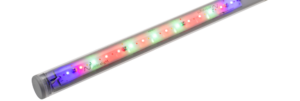When it comes to LED grow light for plants, one of the most common concerns—especially among those growing indoors or in greenhouses—is the risk of leaf burn caused by LEDs. It’s a fair question, but often the result of misinformation or improper use of the technology.
This article aims to clarify the topic and help you make informed choices to support the health and plants growth.
LED light: a resource, not a risk
LED grow light for plants is specifically designed to support vegetative and reproductive development, particularly in controlled environments such as greenhouses, grow boxes, or indoor farming systems.
Compared to traditional lighting, LED technology offers several key benefits:
The issue doesn’t lie in the LED itself, but rather in how it’s used. Too much light, poor distance management, or the wrong light spectrum can indeed cause stress to the leaves.
When light becomes “too much”
Even though LED lighting for plants is engineered to be safe and high-performing, certain conditions can still cause stress if the setup is incorrect.
For example:
These situations can increase the leaf surface temperature or cause photoinhibition, a process where plants reduce photosynthesis due to too much light—ultimately slowing down their development.
How to spot light stress signals
If a LED grow light for plants is too close or remains on too long, plants may start showing visible symptoms: dry tips, discolored edges, curled or scorched leaves.
These aren’t true burns but signals of imbalance, usually linked to photoinhibition. In other words, the plant is receiving more light than it can process.
The role of the light spectrum
One of the greatest advantages of using professional grow light for plants, like ours, is the ability to customize the light spectrum. Plants don’t need the same light we see—they need the one that helps them thrive. Each wavelength supports different stages of plant growth:
Choosing the right spectrum reduces stress risks and makes indoor plant cultivation more precise and effective.
How to prevent leaf damage from LED lights
Here are a few practical tips to ensure safe and effective use of grow lights for plants:
The Ambralight philosophy: cultivation through precision
Our LED grow light for plants growth, entirely designed and manufactured in Italy, are the result of years of research and collaboration with agronomists, researchers, and professional growers.
Each lighting system is fully customized to match the crop, environment, and growing goals of our clients.
With over a decade of expertise and the ability to tailor every spectrum, we don’t just supply lights—we offer complete solutions for successful cultivation.




